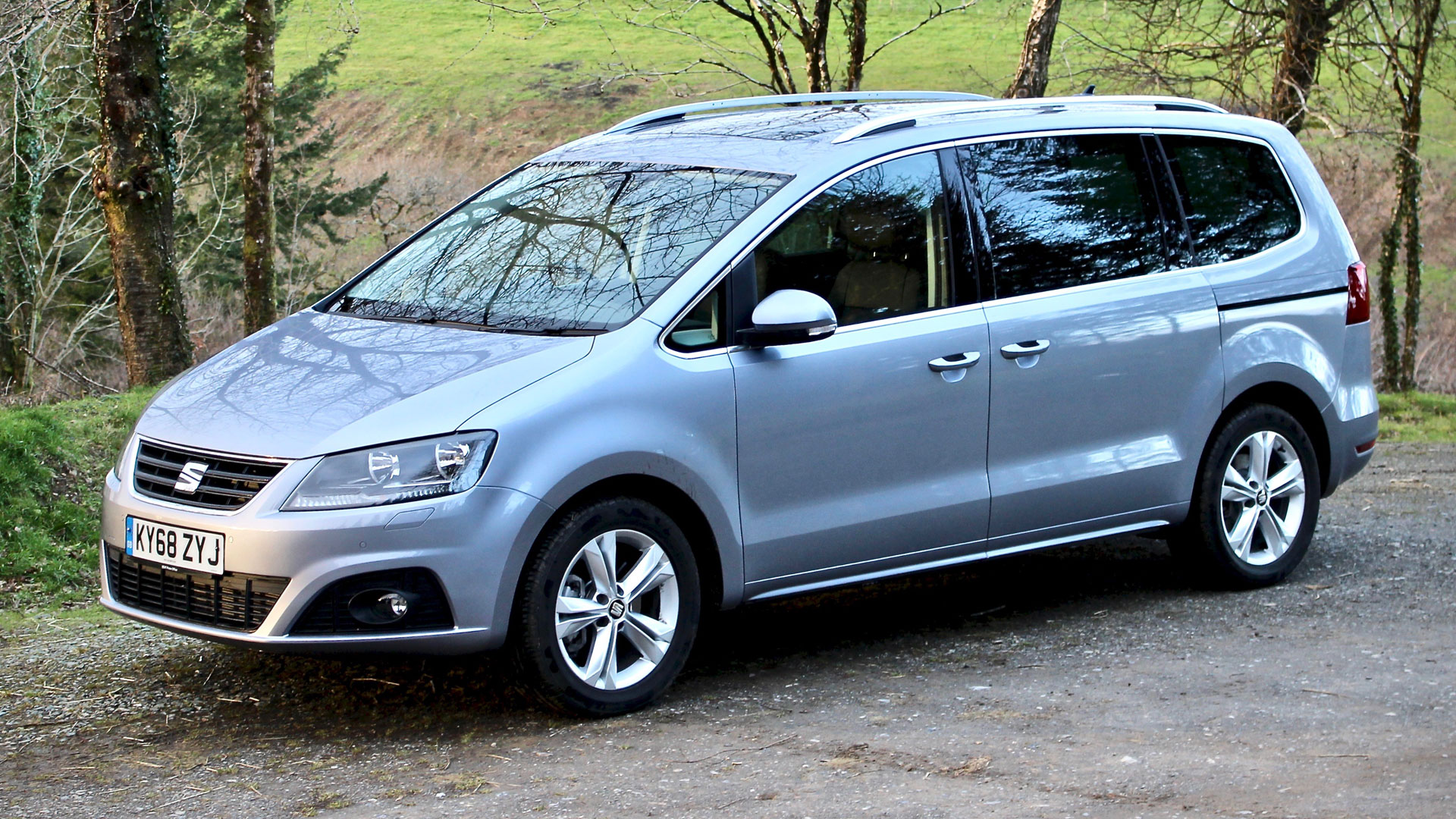
Seat doesn’t want to sell you an Alhambra. It would much rather you opted for the Tarraco, a seven-seat SUV that’s bang on-brand and totally in-tune with current trends. MPVs are out of touch, out of step and very nearly outta here.
But I’m here to tell you that the Seat Alhambra is as relevant to families today as it was when the concept was unveiled at the 1995 Geneva Motor Show. SUVs might be sexy, but they’ll never be as practical and flexible as a properly sorted MPV.
And, after living with a Seat Alhambra for three months and 3,000 miles, I can confirm that it’s a prime example of a properly sorted MPV.
The car in question is a Seat Alhambra in top-spec Xcellence trim, powered by a 2.0-litre diesel engine developing 150hp. It’s possible to get a more powerful diesel engine – the same unit is available with 184hp – but unless you raid the accessories catalogue, the Xcellence model is as good as it gets in Alhambra-land.
Taking the last Seat
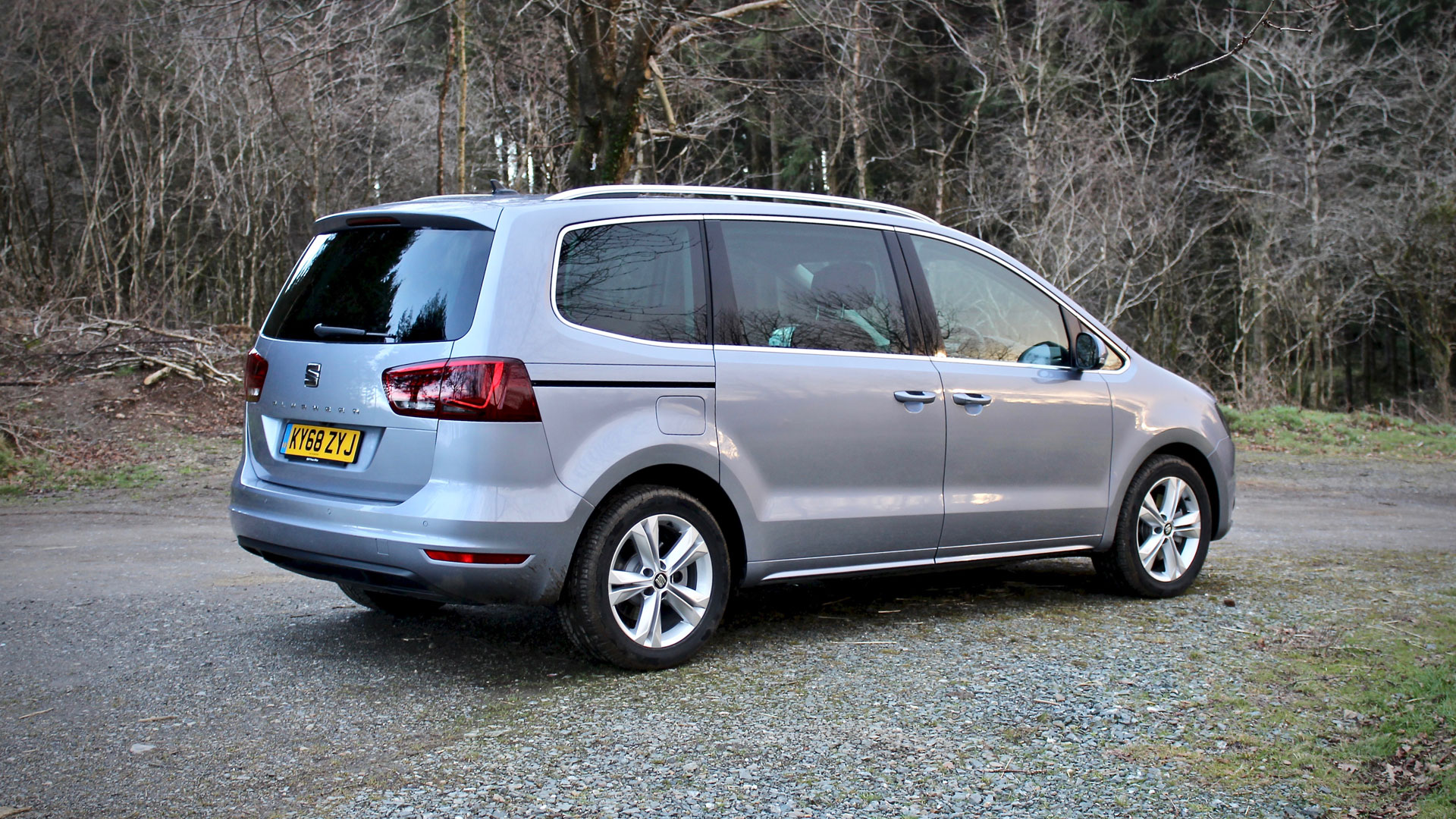
Amazingly, the current Seat Alhambra is approaching its 10th birthday, which in automotive terms means that it should be drawing its pension and taking advantage of free bus travel.
It clings on for life partly because, until the arrival of the Tarraco, Seat hasn’t had another seven-seat SUV in its range, but also because Volkswagen hasn’t replaced the platform-sharing Sharan. The truth is, this could be the last Alhambra.
Few people will shed a tear. MPV purchases are driven through necessity rather than desire; their arrival on the driveway providing a very visual reminder that you’re no longer in the prime of your life.
What follows is 20 years of active parenthood, followed by years of providing financial and emotional support through uni and first-time-buyer schemes, then retirement, then… well, you can guess the rest.
You can understand why Mr and Mrs Two-Point-Four Family are attracted to a visually more attractive seven-seat SUV, seemingly happy to accept a little less practicality in exchange for more perceived glamour at the school gates. But before you fall for the SUV marketing twaddle, here are half a dozen reasons why the Seat Alhambra is worthy of your attention.
Sliding doors are ace
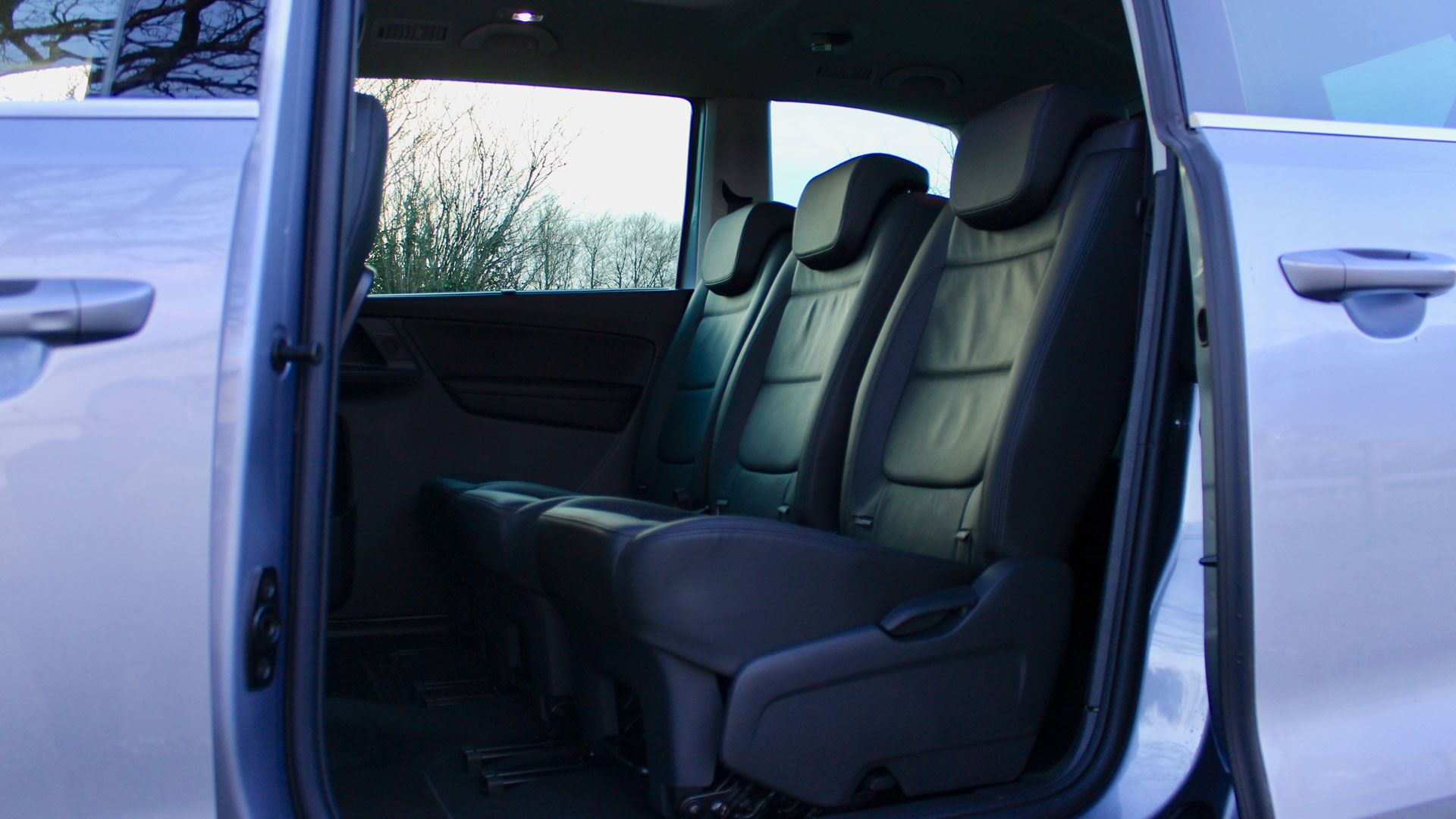
Sliding doors are good, but electric sliding doors are even better. Opt for the SE L or Xcellence trim levels and the doors can be operated at the touch of a button, giving joy to children everywhere.
Seriously, kids love sliding doors, while you can live out your A-Team fantasies by hanging out of the side like ‘Howling Mad’ Murdock. Warning: don’t try this at home, you crazy fools.
Aside from rekindling memories of Saturday night telly, the sliding doors are extremely useful in tight parking spaces and make getting into and out of the car very easy. The tailgate is also powered, so you can put on quite a display as you wander back to the Alhambra in a supermarket car park.
There are surprisingly few cars available with sliding doors, which is a shame because once you’ve lived with them, you’ll find it hard to live without them.
Third-row seats that aren’t third-class
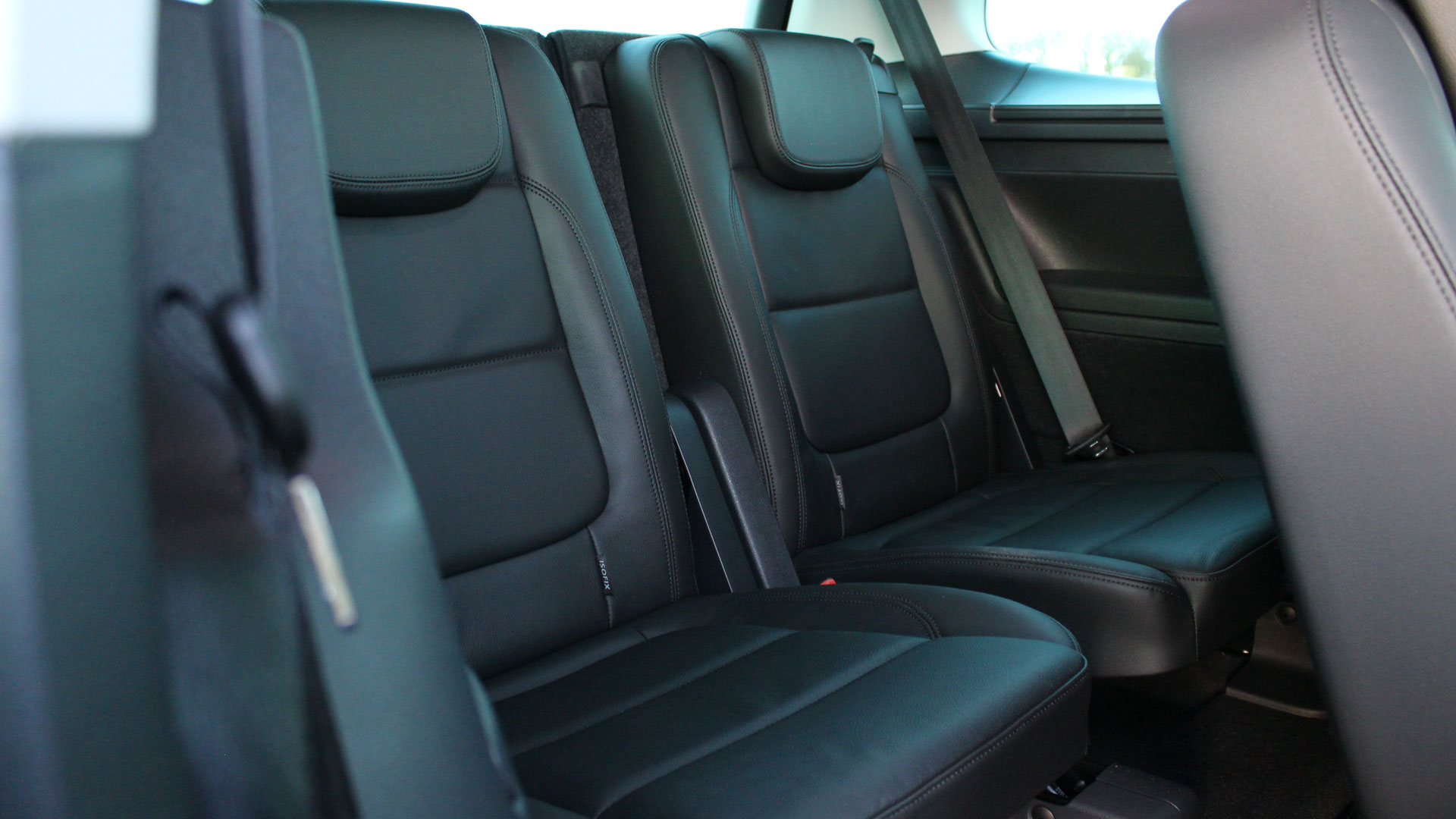
How often have you read a review of a seven-seat SUV only to find that the seats in the third row aren’t quite as billed in the glossy brochure? At best, many seven-seat SUVs are little more than 5+2 vehicles, with the third row designed for occasional use only.
Things are different in the Alhambra. Getting into the very back is easy, thanks to the sliding doors and the way in which the second row of seats tilt forward, but once there, there’s plenty of space even for taller children and adults.
Put it this way: whenever we’ve carried a full quota of five children, there’s been a scramble for the rear seats. There’s plenty of headroom and, thanks to the fact that the three middle seats slide forward independently, plenty of legroom, too. There’s even enough legroom if the middle row seats are slid all the way back.
Thanks to roof-mounted lights, a pair of cupholders on the left, a storage compartment on the right, and a pair of air vents, these don’t feel like the cheap seats. Remember when all the cool kids sat at the back of the bus? Things are no different in the Alhambra.
It has a boot the size of a Suzuki Swift
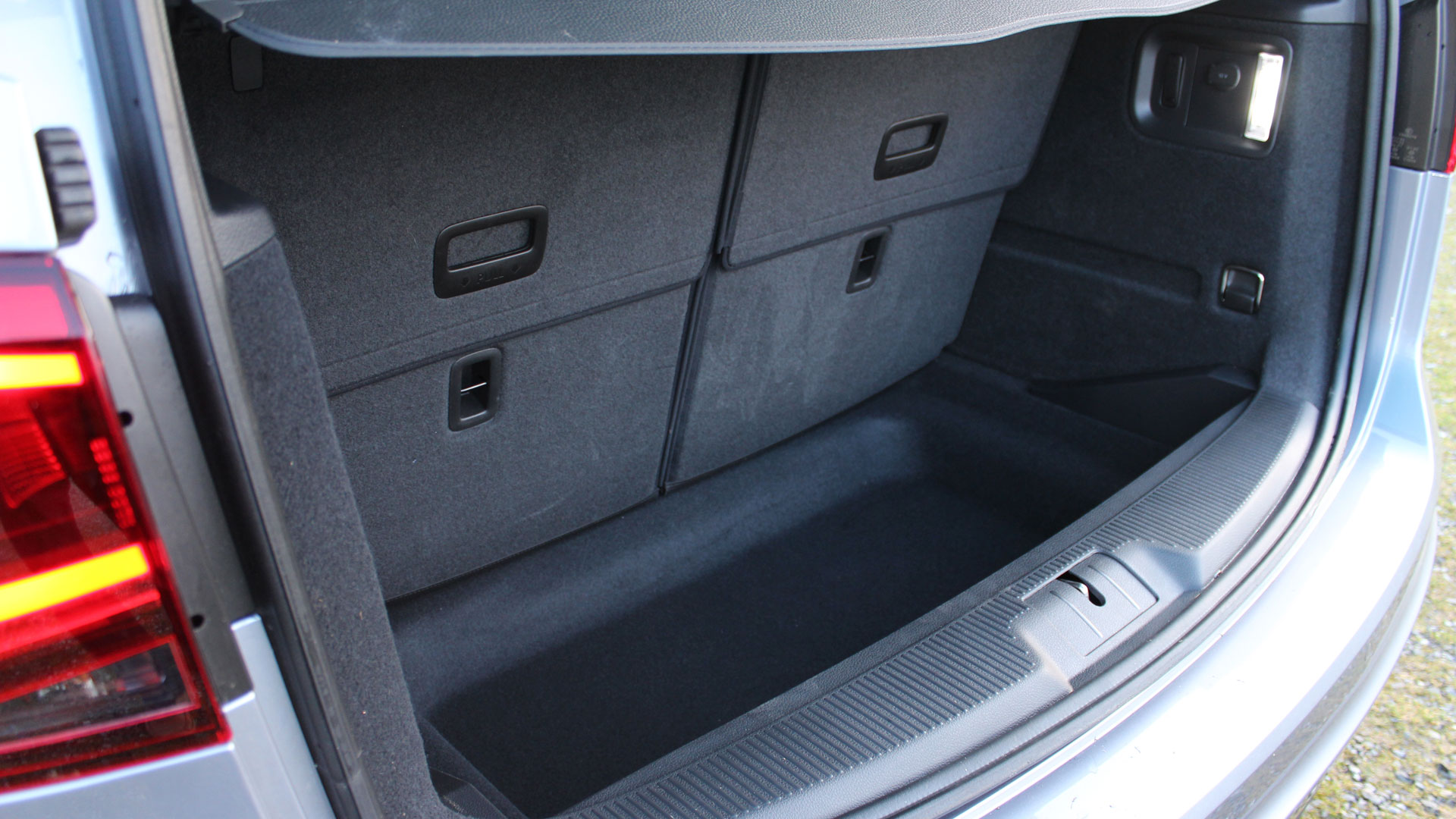
Even with all seven seats folded up, the Seat Alhambra offers 267 litres of luggage space, which is two litres more than the Suzuki Swift. That’s pretty decent for a seven-seat bus, albeit far from ideal if you’re heading off for a family holiday with all five children in tow.
This rises to 658 litres in five-seat mode or 2,297 litres if you turn your Alhambra into a two-seater. While the Tarraco can muster 700 litres with the third row folded down, it can offer just 1,775 litres with the second row folded away. Once again, the Alhambra has its fashionable upstart well and truly licked.
And don’t think you’ll need a degree in origami to run through the various seating configurations. I’m about as handy as a chimp wearing boxing gloves, and even I managed to work it out without resorting to the manual. The seats are light, easy to operate and a doddle to fold away. You’re also presented with an entirely flat floor.
It feels like a posh bus
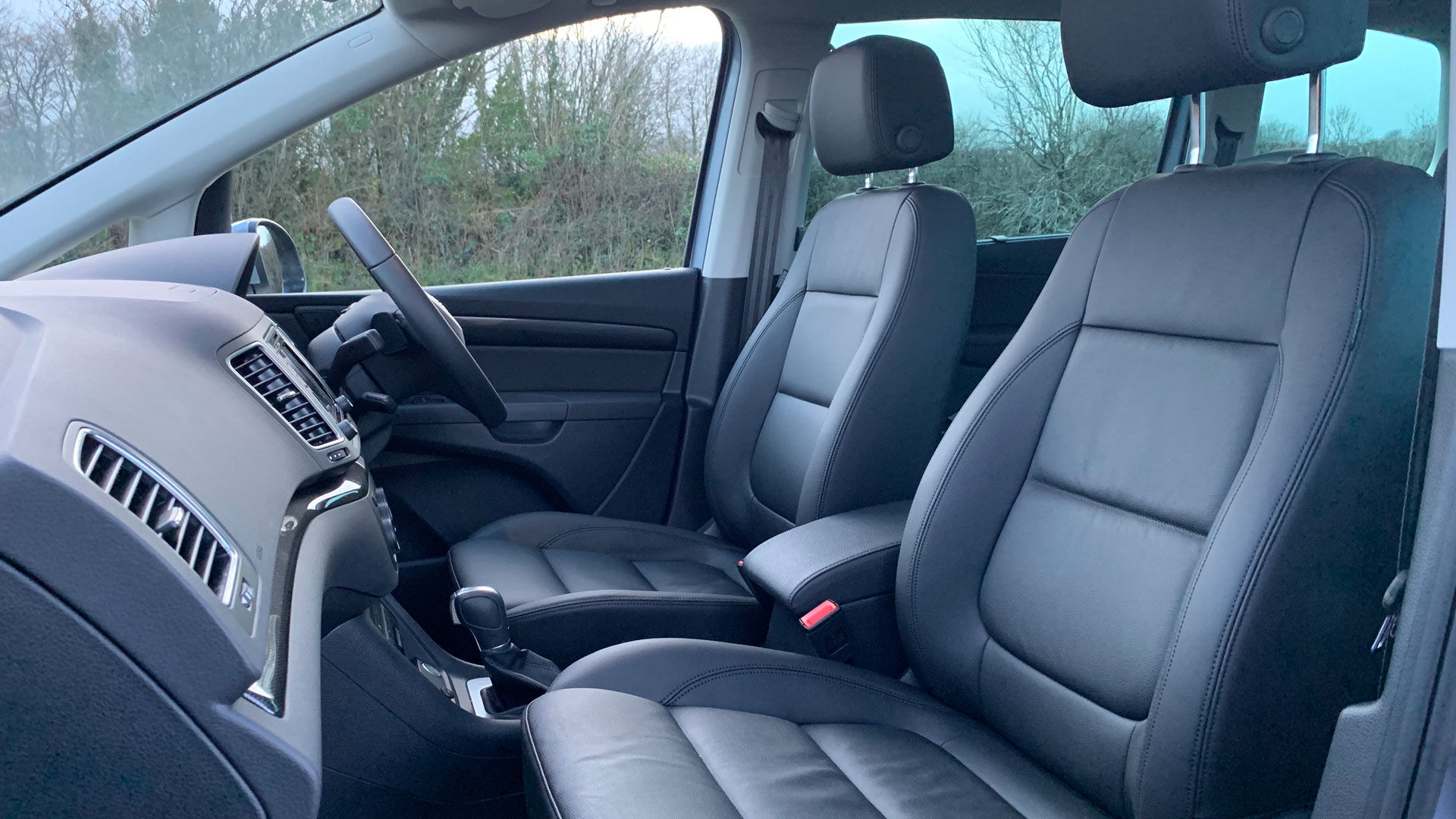
With the caveat that I’ve been reviewing an Alhambra in the plush Xcellence trim, there’s a distinctly premium feel to this MPV. Integrated sunblinds and aircraft-style folding tables on the front seat backrests are standard on SE and above, while 12-way electrically adjustable and heated leather front seats, DAB radio, sat-nav, rear-view camera and voice recognition are standard on SE L.
The Xcellence model boasts an opening panoramic sunroof with electric sunblind, sports-style front seats, chrome door sills, headlight washers, heated washer jets and keyless entry and go.
It’s actually pleasant to drive. No, really, it is
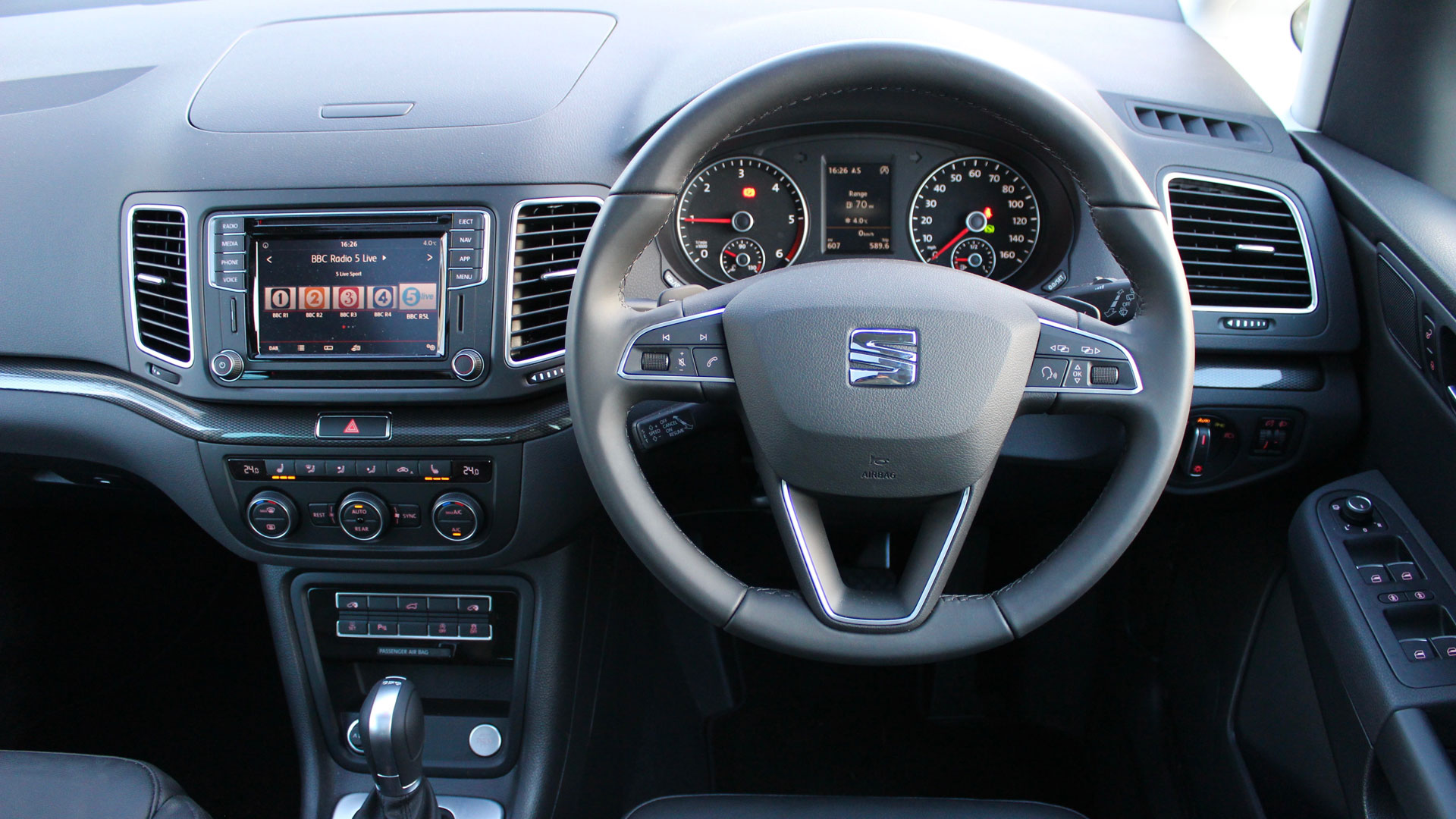
I won’t pretend that the Alhambra is a great car to drive, but you’re likely to be pleasantly surprised by its road manners. It might be old, but the Alhambra is based on an old Volkswagen car platform, rather than something with its roots in the commercial sector, so it’s surprisingly agile for a car of its size.
The steering has a nice weight to it, there’s a surprising lack of body-roll when cornering, and if anything, the ride is a little on the firm side, but this might have something to do with the ‘sport’ suspension found on the Xcellence model.
Even the 150hp 2.0-litre diesel engine offers just enough in the way of performance, with the Alhambra having a decent turn of pace, even with all seven seats occupied. I’m not sure you’d need the extra poke offered by the 184hp version.
It’s never what you’d class as ‘fun’, and no matter how many times Seat peppers its press pack with the ‘sport’ word, it still feels at odds with the brand proposition. However, if your only experience of driving MPVs stems from something with the underpinnings of a van, you’ll find much to like about the Alhambra.
You can coast through life
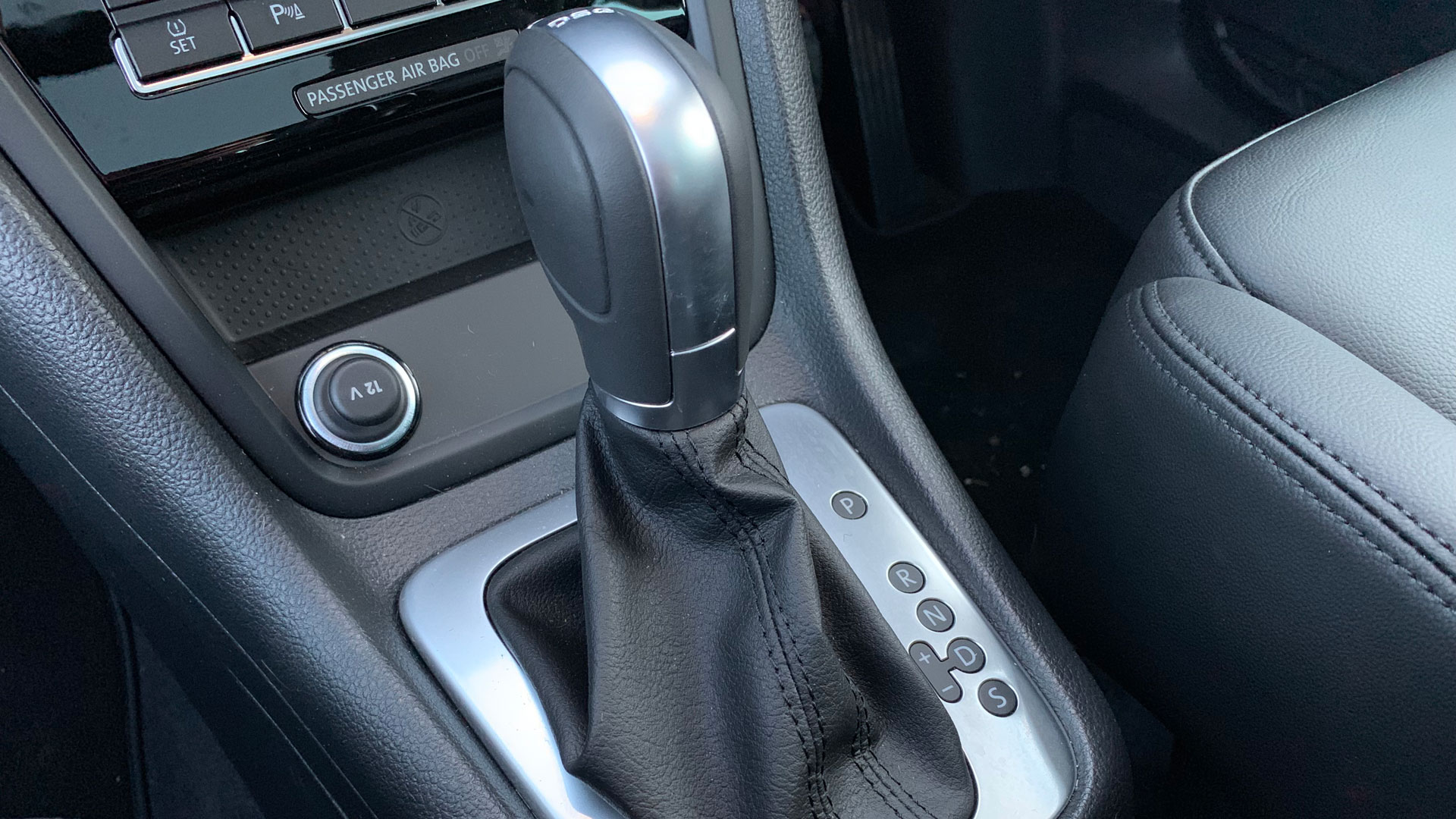
I’m not a huge fan of the six-speed DSG dual-clutch transmission, although I’m not sure I could stomach a manual gearbox in a seven-seat MPV. Ninety percent of the time, the DSG is perfectly adequate, but it can feel flustered at junctions and when crawling in traffic, while it often selects the wrong gear for climbing or descending hills.
But there’s one aspect of DSG-equipped diesel engines I really like: coasting. When you lift off the throttle, the engine is de-clutched, helping to deliver better fuel economy. It’s why I rarely use the cruise control because even the gentlest of gradients can see you freewheeling like a kid on a skateboard.
I guess I shouldn’t get too carried away because the fuel savings are probably wiped out by the effort required to climb the hill, but it’s strangely satisfying trying to coast for as long as possible.
But… (because there’s always a ‘but’)
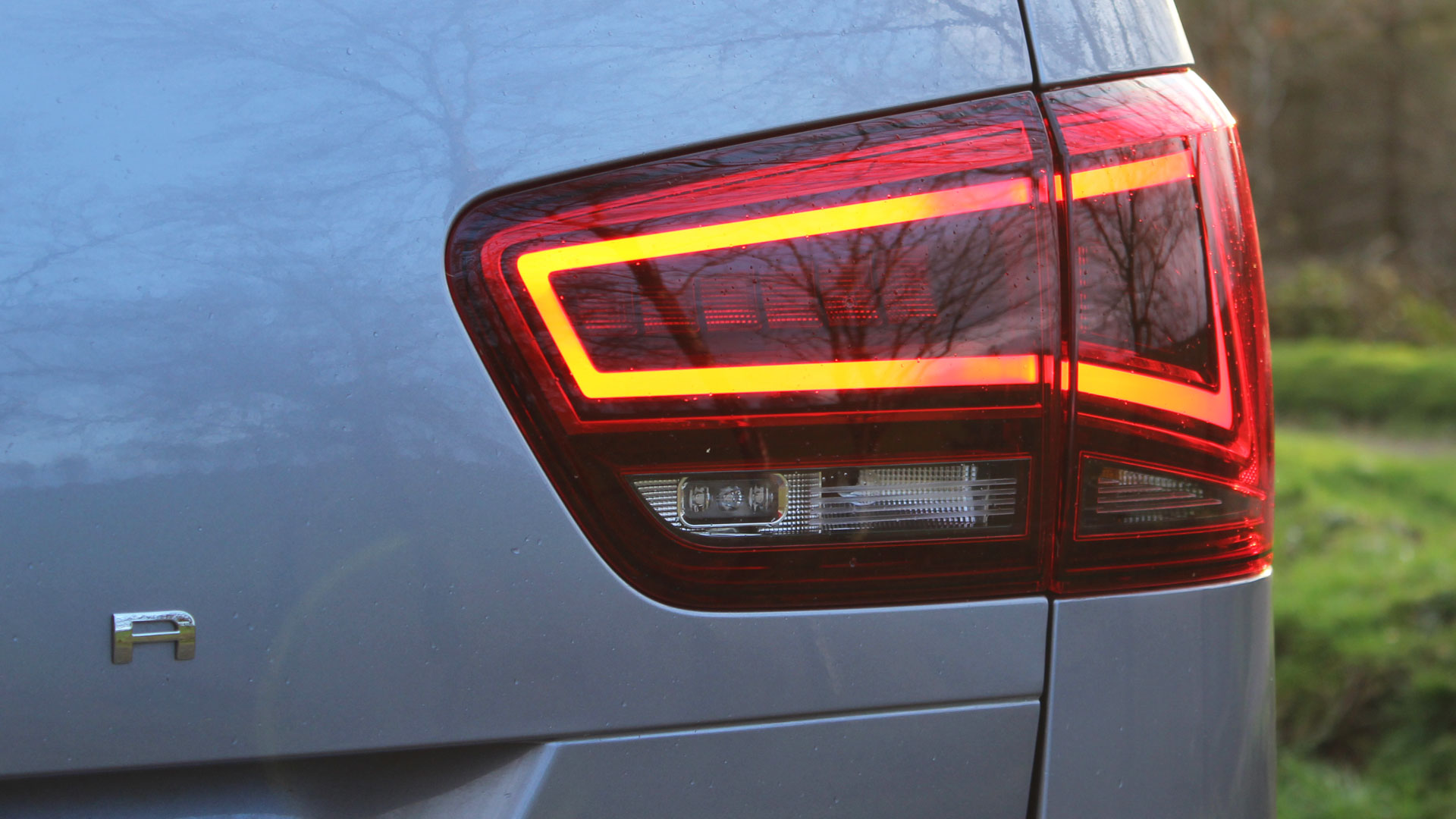
It’s not all chocolate and roses in the Alhambra, but what’s remarkable is the fact that I find myself nitpicking to find reasons for complaint. Many of its rivals will have been replaced, revised or refreshed in the decade since the Alhambra made its debut, and yet it remains one of the best MPVs you can buy.
Faults? Well, 36.4mpg isn’t a great return over the course of three months, and the interior harks back to Volkswagens of old, with a cabin that’s rather sombre and lacking in flair. Meanwhile, the 6.5-inch infotainment screen looks a little quaint in 2019, and there’s no Apple CarPlay or Android Auto.
Aside from these minor points, I’m struggling to find things to dislike about the Alhambra. It’s so refreshing to find a car that masters everything it sets out to do, rather than promising the earth and then failing to deliver.
When the world wakes up to the fact that the SUV isn’t the perfect family car, the MPV might have bitten the dust, and cars like the Seat Alhambra will be relics of the past. Which is a tragedy, because a full-size SUV with sliding doors is one of the most underappreciated body styles on the market, but not enough of you are buying them.
It might not be cool, but the Seat Alhambra is big and surprisingly clever.